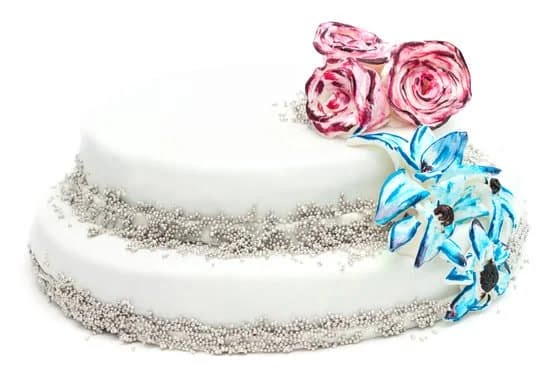Fruit cake decorations are an essential and delightful aspect of creating a visually stunning and delicious dessert. The use of various fruits, nuts, and edible flowers not only enhances the overall appearance but also adds to the taste and texture of the cake. Whether it is for a special occasion or as a sweet treat for everyday enjoyment, fruit cake decorations play a significant role in elevating the appeal and flavor of the traditional fruit cake.
The history of fruit cake decorations dates back centuries, with cultural significance influencing their evolution over time. Understanding the origins and development of these decorative elements provides valuable insights into their symbolic meanings and traditional uses. The types of decorations available for fruit cakes are diverse, ranging from fresh fruits to candied fruits, nuts, and even edible flowers. Each type offers its unique aesthetic appeal and contributes distinct flavors to the cake.
Choosing the right fruit cake decorations requires careful consideration of color coordination, texture variations, and flavor compatibility. With numerous options available, it’s important to select decorations that harmonize with the overall theme and desired taste profile of the fruit cake. Additionally, creative ideas for decorating fruit cakes can inspire innovative designs, patterns, and techniques that add personalized style to the presentation of this beloved dessert.
History of Fruit Cake Decorations
Fruit cake decorations have a rich and fascinating history that dates back centuries. The tradition of adorning fruit cakes with decorative elements has cultural significance in many regions around the world, including Europe, the Middle East, and Asia. These decorative practices have evolved over time, influenced by various historical and societal factors.
Origins of Fruit Cake Decorations
The practice of decorating fruit cakes can be traced back to ancient civilizations such as the Romans and Egyptians, who used nuts, dried fruits, and honey to embellish their baked goods. In medieval Europe, fruit cakes were often elaborately decorated with intricate designs made from marzipan, a sweet almond paste. This tradition continued into the Renaissance period when fruit cake decorations became more ornate and extravagant, symbolizing wealth and prestige.
Cultural Significance
In many cultures, the decoration of fruit cakes holds symbolic meaning. For example, in some Asian countries, fruit cake decorations are intricately crafted to represent good luck, prosperity, and longevity. In Western traditions, fruit cake decorations are often associated with celebrations such as weddings and Christmas, where they serve as elaborate centerpieces or gifts. The cultural significance of these decorations has contributed to their enduring popularity throughout history.
Evolution of Fruit Cake Decorations
Over time, the methods and materials used for fruit cake decorations have evolved to reflect changing tastes and trends. From traditional royal icing designs to modern fondant creations, there is a wide range of decorative techniques available today. Additionally, advancements in agricultural practices and food technology have expanded the variety of fruits and nuts that can be used for decorating fruit cakes. This evolution has allowed for greater creativity and innovation in the art of fruit cake decoration.
Types of Fruit Cake Decorations
Fresh fruits, candied fruits, nuts, and edible flowers are among the most popular types of decorations used on fruit cakes. Each type brings its own unique texture, color, and flavor to the overall presentation of the cake. Using a combination of these decorations can create a visually stunning and delicious fruit cake that is sure to impress both eyes and taste buds.
Fresh fruits such as berries, kiwi slices, and citrus segments not only add vibrancy to the cake but also provide a burst of juicy sweetness with every bite. Candied fruits, on the other hand, bring a delightful chewy texture and intensified flavor that complements the dense richness of fruit cake.
Nuts like almonds, pecans, or pistachios add a crunchy element and earthy nuttiness that contrasts beautifully with the moist interior of the cake. Edible flowers such as pansies or rose petals lend an elegant touch and floral aroma to the decoration, elevating the aesthetic appeal of the dessert.
When choosing fruit cake decorations, it’s essential to consider the compatibility of colors, textures, and flavors. Fresh fruits should be ripe but firm enough to hold their shape when placed on top of the cake. Additionally, candied fruits should not overpower the natural sweetness of the cake but rather enhance it.
Innovative combinations can also be employed for more creative presentations. For instance, arranging fresh berries in a gradient pattern or using candied orange slices in a wreath-like formation can add an artistic flair to your fruit cake decorations. Ultimately, selecting the right types of decorations for your fruit cake is about achieving balance and harmony in both visual appeal and taste.
Choosing the Right Fruit Cake Decorations
When it comes to choosing the right fruit cake decorations, there are several factors to consider in order to achieve a visually appealing and delicious result. From color and texture to flavor compatibility, each element plays a crucial role in enhancing the overall appearance and taste of the cake. By carefully selecting and pairing fruit cake decorations, you can create a stunning centerpiece for any occasion.
Color
The color of fruit cake decorations is an important aspect to consider when choosing the right elements for your cake. Vibrant, fresh fruits such as berries, citrus slices, or pomegranate arils can add a pop of color and contrast against the backdrop of the cake. For candied fruits and nuts, consider their natural hues and how they will complement the existing color palette of the cake.
Texture
Incorporating different textures into your fruit cake decorations can create visual interest and depth. Fresh fruits offer a juicy burst of texture, while candied fruits provide a chewy and glossy finish. Nuts bring a crunchy element, adding complexity to each bite. Edible flowers contribute delicate, soft textures that can elevate the overall look of the cake.
Flavor Compatibility
When selecting fruit cake decorations, it’s essential to consider their flavor profiles and how they will complement the taste of the cake. Fresh fruits like berries or tropical fruits can add a refreshing burst of sweetness. Candied fruits offer concentrated bursts of flavor with hints of caramelization. Nuts provide earthy tones that can enhance rich or spiced cakes. Consider how these flavors will interact with the base flavors of your fruit cake to ensure harmony in every bite.
By carefully considering color, texture, and flavor compatibility when choosing fruit cake decorations, you can elevate the visual appeal and taste experience of your creation. Whether creating a traditional fruitcake or experimenting with modern twists on classic designs, thoughtful selection and placement of decorations are key factors in achieving an impressive end result that will leave a lasting impression on your guests.
Creative Fruit Cake Decorating Ideas
Fruit cakes are a timeless and beloved dessert that can be enjoyed year-round, but especially during the holiday season. One of the key factors that make fruit cakes so special is their decorations. The way a fruit cake is adorned not only impacts its visual appeal but also greatly contributes to its overall taste and dining experience. Fruit cake decorations come in various forms and styles, each adding a unique touch to the delicious treat.
When it comes to decorating a fruit cake, there are endless possibilities to explore. From traditional designs to modern twists, the options for creative fruit cake decorations are truly limitless. Here are some innovative and visually appealing ways to decorate fruit cakes:
- Fresh Fruits: Adding fresh fruits such as berries, citrus slices, or figs can bring a burst of color and natural sweetness to the cake.
- Candied Fruits: Using candied fruits like cherries, pineapple, or ginger not only adds a pop of vibrant colors but also introduces delightful bursts of flavor.
- Nuts: Incorporating nuts like almonds, pistachios, or pecans provides an added crunch and nutty richness to the overall texture of the cake.
- Edible Flowers: Decorating with edible flowers such as rose petals, pansies, or lavender buds brings an elegant and whimsical touch to the fruit cake.
In addition to these classic options for fruit cake decorations, there are also innovative techniques that can elevate the visual appeal of the dessert even further. Marzipan fruits can be sculpted into realistic shapes and painted with edible food coloring for a stunning effect. Alternatively, decorative glazes made from boiled fruits or juices can be used to create intricate patterns and designs on the surface of the cake.
When choosing which creative fruit cake decoration ideas to implement, it’s important to consider both aesthetic appeal and flavor compatibility. The decorations should complement the flavor profile of the cake while enhancing its visual allure. By experimenting with different designs, patterns, and techniques in fruit cake decorating, one can create a truly exceptional dessert that will impress both visually and gastronomically alike.
DIY Fruit Cake Decorations
When it comes to creating homemade fruit cake decorations, there are several options that can add a personal touch and unique flair to any fruit cake. One popular choice is candied citrus peel, which not only adds a burst of color but also a sweet and tangy flavor. To make candied citrus peel, start by peeling oranges, lemons, or limes and removing the white pith.
Cut the peel into thin strips and simmer them in a simple syrup until they become translucent. Once cooled and dried, these candied citrus peels can be used to adorn fruit cakes in a beautiful and delicious way.
Another delightful option for homemade fruit cake decorations is marzipan fruits. Marzipan, a sweet almond paste, can be molded and shaped into miniature fruits such as apples, pears, berries, and citrus fruits. These tiny edible creations not only add a whimsical touch to fruit cakes but also provide a delightful contrast in texture and flavor. Using food coloring to paint these marzipan fruits further enhances their visual appeal, making them an eye-catching addition to any fruit cake.
For those looking for an elegant yet straightforward way to adorn fruit cakes with homemade decorations, decorative fruit glazes are an excellent choice. These glazes can be made from natural ingredients such as apricot or apple jelly, brushed over the top of fresh fruits on the cake to give them a glossy sheen while also preserving their vibrant colors.
For example, thinly sliced kiwi or strawberries arranged on top of the cake can be glazed for a polished and professional finish.
| Fruit Cake Decoration Type | Description |
|---|---|
| Candied Citrus Peel | Peel oranges or lemons & simmer in syrup; once cooled & dried use as decoration. |
| Marzipan Fruits | Sweet almond paste molded into miniature fruits; painted with food coloring for added visual appeal. |
| Decorative Fruit Glazes | Made from apricot or apple jelly; brushed onto fresh fruits for glossy finish & preserved colors. |
Fruit Cake Decoration Trends
Fruit cake decorations have come a long way from traditional designs to modern twists, with emerging decorative techniques adding a touch of creativity and innovation to these delectable treats. Over the years, fruit cake decorations have evolved in response to changing tastes and preferences, resulting in a diverse range of styles and trends that cater to various aesthetic sensibilities.
From elaborate designs to minimalist approaches, there is something for everyone when it comes to adorning fruit cakes with visually stunning decorations.
Current trends in fruit cake decorations encompass a wide spectrum of styles, ranging from elegant and sophisticated to playful and whimsical. Modern twists on traditional designs often incorporate unconventional elements such as metallic accents, geometric patterns, and asymmetrical arrangements. These contemporary embellishments bring a fresh perspective to fruit cake decorations, appealing to individuals seeking unique and avant-garde options for their celebratory cakes.
Emerging decorative techniques also contribute to the dynamic landscape of fruit cake decorations, showcasing innovative approaches that push the boundaries of traditional craftsmanship. This includes the use of edible gold leaf, hand-painted motifs, and abstract sculptural forms that add a touch of artistry and individuality to fruit cakes. By embracing these new techniques, decorators can elevate the visual appeal of fruit cakes while offering customers an opportunity to experience something truly extraordinary.
Ultimately, the ever-changing nature of fruit cake decoration trends reflects the evolving tastes and preferences within the culinary world. Whether inspired by timeless elegance or contemporary flair, the diverse array of styles and techniques available allows for endless possibilities when it comes to creating visually captivating and unforgettable fruit cake decorations. Keep reading for more creative ideas on how to adorn your delicious confection with enticing fruits.
- Embracing metallic accents
- Incorporating abstract sculptural forms
- Experimenting with hand-painted motifs
Presentation and Serving Suggestions
When it comes to presenting and serving a fruit cake adorned with decorations, there are several key considerations to keep in mind in order to enhance the visual appeal and overall dining experience. Firstly, it’s important to choose the right serving platter or cake stand that complements the theme and style of the fruit cake decorations.
A simple, elegant platter can allow the vibrant colors and intricate designs of the decorations to stand out, while a decorative cake stand can add an extra touch of sophistication to the presentation.
In addition to selecting the appropriate serveware, paying attention to the placement of the fruit cake on the serving dish is crucial. For example, if the fruit cake features cascading fresh fruits or edible flowers as decorations, arranging them in a visually appealing manner can elevate the overall presentation. Consider creating a focal point with larger fruits or flowers at the center of the cake and arranging smaller ones around them for a balanced and aesthetically pleasing display.
Lastly, when it comes to serving suggestions for a fruit cake adorned with decorations, consider offering complementary accompaniments such as whipped cream, vanilla ice cream, or fruit coulis on the side. These additional elements not only enhance the flavor profile of the fruit cake but also provide a delightful contrast in textures and temperatures.
As an alternative presentation idea, individual slices of fruit cake can be served with a dollop of flavored cream or a sprinkle of chopped nuts for an added touch of indulgence.
Conclusion
In conclusion, fruit cake decorations play a crucial role in enhancing the visual appeal and taste of the cake. The history of fruit cake decorations spans across different cultures and has evolved over time, with various types of decorations ranging from fresh fruits to edible flowers.
When selecting the right fruit cake decorations, it is important to consider factors such as color, texture, and flavor compatibility to ensure a harmonious overall appearance. Additionally, embracing creative fruit cake decorating ideas and DIY options allows for endless possibilities in creating stunning and unique designs.
The versatility of fruit cake decorations allows for a wide range of decorative techniques and styles, including modern twists on traditional designs and emerging trends that cater to diverse preferences. From intricate designs to simple yet elegant arrangements, fruit cake decorations offer endless opportunities for creativity and personalization.
Whether serving a homemade or store-bought fruit cake, presentation plays a vital role in enhancing the overall dining experience. By paying attention to presentation and serving suggestions, individuals can elevate the enjoyment of fruit cakes adorned with beautiful decorations.
In essence, the impact of creative decoration on the enjoyment of fruit cakes cannot be overstated. Fruit cake decorations not only contribute to the aesthetics but also enhance the overall sensory experience.
The careful selection and thoughtful arrangement of decorations can transform a simple dessert into a visually stunning centerpiece that delights both eyes and taste buds. As such, embracing creativity in fruit cake decoration allows individuals to showcase their personality and artistic flair while making every occasion special with delectable treats adorned with delightful fruit cake decorations.

Welcome to our cake decorating blog! My name is Destiny Flores, and I am the proud owner of a cake decorating business named Cake Karma. Our mission is to provide delicious, beautiful cakes for all occasions. We specialize in creating custom cakes that are tailored specifically to each customer’s individual needs and tastes.





